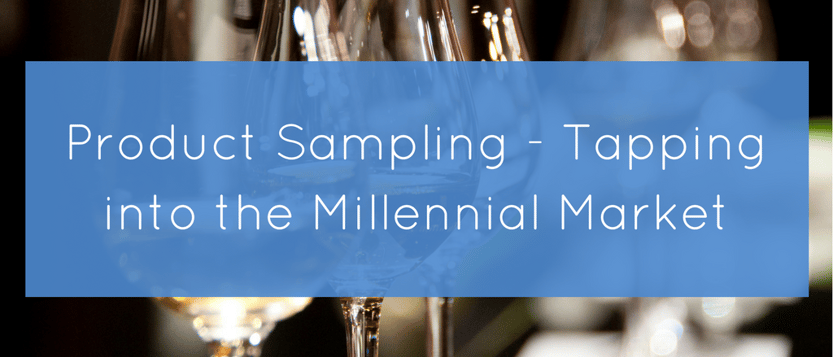Todays shoppers are more educated and product aware than ever.
When not rushing through the 7-11 for convenience they are usually found in the local supermarket, meandering through the aisles for their staple good, product they buy week in, week out.
However, there's a good chance that if offered a new product to sample that will introduce them to new products, perhaps ones even healthier than the items they currently consume.
Testing product samples expands product knowledge so that consumers can make better choices on future shopping trips.
High on any brand target demographic, alcohol brands included is that all powerful millennial buyer. Money in their pocket and open to new tastes and brands, the millennial presents an opportunity for any growing brand to gain share of wallet from a loyal fan that could be a customer for many years to come.
Watching the Expanding Alcohol Market
Something that we have seen become more commonplace in superstores like Target is when companies promote products by offering samples to adults only.
These companies offer specialty wines, ciders, hard sodas, craft beers, and liqueurs that are targeted for mass consumption.
This new kind of product testing has expanded the market of people who consume specialty beverages beyond members of wine-of-the-month clubs and craft beer clubs.
It also gives a taste to people who usually consume adult beverages mostly in their favorite bar or restaurant.

Where are the Millennials?
One driver behind the increased use of product sampling in grocery stores and superstores is to target specifially this generation of Millennials, who are now in the workforce and raising their own children.
According to Forbes.com's Jeff Fromm in his American Millennials Report, these younger buyers differ from older buyers because they view shopping as a social routine.
They may shop with relatives and friends. They want amenities in their store that will enhance their experience.
Where Do We Go From Here?
Product sampling continues to be an important way that promotion companies can reach consumers within their busy lives.
In the future, millennials will want more ways to take an action after having the product sampling experience.
For example, an in-store sampling campaign is a way for the marketer to share a new app that consumers can download for easier ordering and purchasing of a product.
Consumers will have more choices. They might become aware of a new craft beer that is sold in restaurants and bars and packaged for the mass market. They may choose to order it directly from their beverage club or have it shipped to their home instead of finding deals on it in local stores.
If they learn about the brand on their smartphone, such as by downloading the app at the promotions table, it's easy to share it with everyone in their social network. They can just post about it on their Facebook page or blog or email or text it to contacts in their smartphone.
How Should Your Brand Look?
We have found that the effort required for setting up an in-store sampling campaign is worthwhile when the brands have a specific marketing or promotions strategy in mind.
They aren't just conducting outreach to create product awareness.
They have specific messages they want to convey to consumers and follow-up actions that consumers should take.
Their goal is to attract more brand followers.
Without a strategy in mind, it is possible to waste resources on grocery store promotions.
What we love is that brands in one industry, such as specialty alcohol beverages, can learn from the experiences of other brands, such as snack makers. There are also many ways to cross-promote and grow your market through grocery store product sampling - just ask us how!



